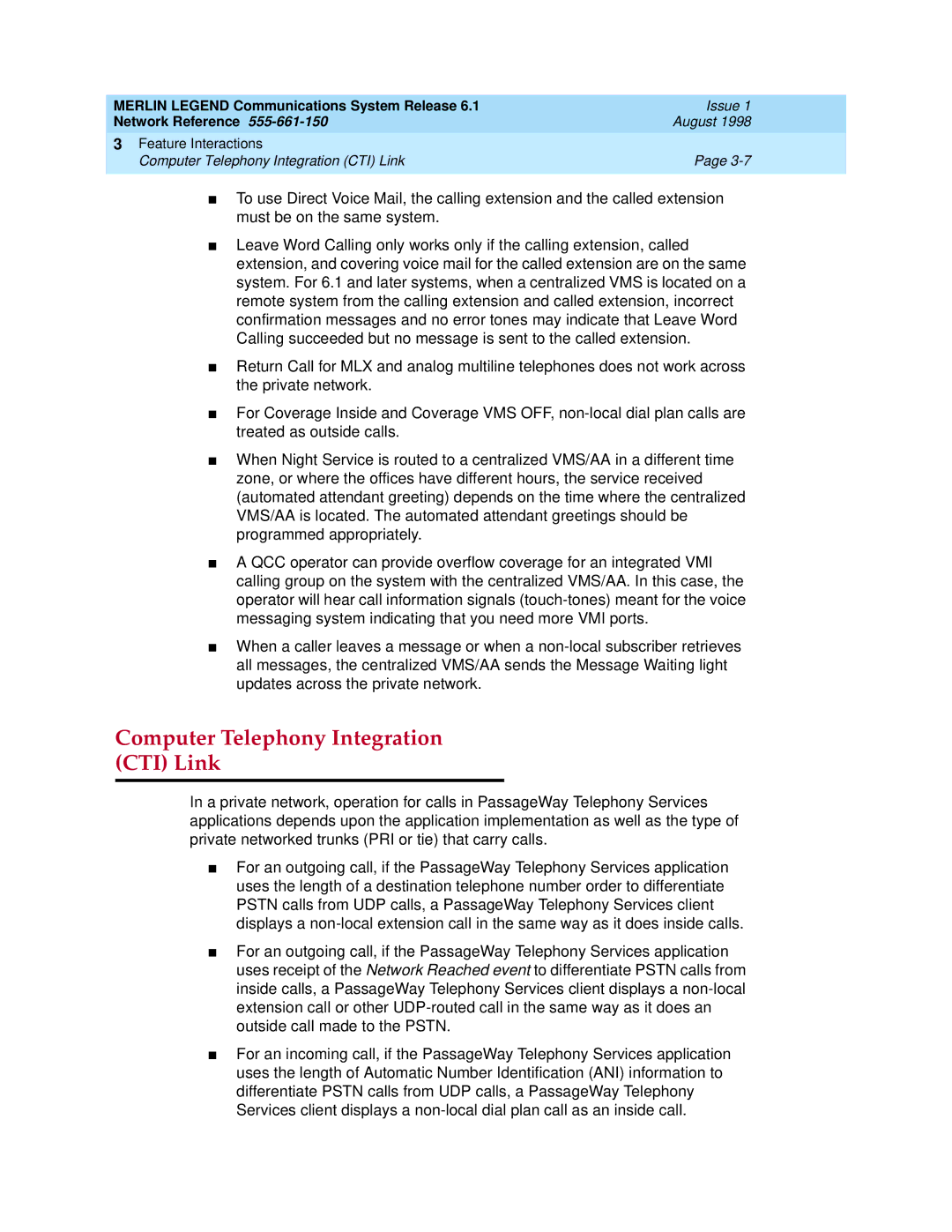MERLIN LEGEND Communications System Release 6.1 | Issue 1 |
Network Reference | August 1998 |
3 Feature Interactions |
|
Computer Telephony Integration (CTI) Link | Page |
|
|
■To use Direct Voice Mail, the calling extension and the called extension must be on the same system.
■Leave Word Calling only works only if the calling extension, called extension, and covering voice mail for the called extension are on the same system. For 6.1 and later systems, when a centralized VMS is located on a remote system from the calling extension and called extension, incorrect confirmation messages and no error tones may indicate that Leave Word Calling succeeded but no message is sent to the called extension.
■Return Call for MLX and analog multiline telephones does not work across the private network.
■For Coverage Inside and Coverage VMS OFF,
■When Night Service is routed to a centralized VMS/AA in a different time zone, or where the offices have different hours, the service received (automated attendant greeting) depends on the time where the centralized VMS/AA is located. The automated attendant greetings should be programmed appropriately.
■A QCC operator can provide overflow coverage for an integrated VMI calling group on the system with the centralized VMS/AA. In this case, the operator will hear call information signals
■When a caller leaves a message or when a
Computer Telephony Integration | 3 |
(CTI) Link |
In a private network, operation for calls in PassageWay Telephony Services applications depends upon the application implementation as well as the type of private networked trunks (PRI or tie) that carry calls.
■For an outgoing call, if the PassageWay Telephony Services application uses the length of a destination telephone number order to differentiate PSTN calls from UDP calls, a PassageWay Telephony Services client displays a
■For an outgoing call, if the PassageWay Telephony Services application uses receipt of the Network Reached event to differentiate PSTN calls from inside calls, a PassageWay Telephony Services client displays a
■For an incoming call, if the PassageWay Telephony Services application uses the length of Automatic Number Identification (ANI) information to differentiate PSTN calls from UDP calls, a PassageWay Telephony Services client displays a
